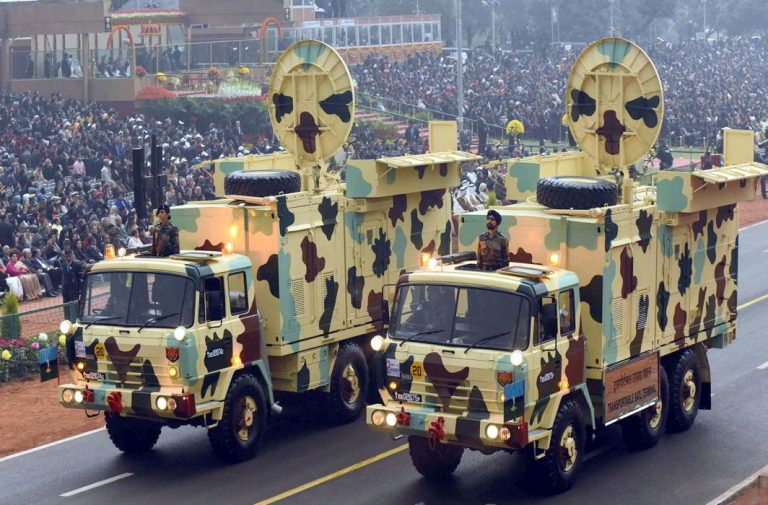
Above: Service Corps tableau passes through Rajpath on Republic Day. Photo: UNI
With over 100 Lt Colonels and Majors moving the Supreme Court over alleged “discrimination” in the promotion of officers of the services corps, isn’t it time the army took a serious look at their complaint?
~By Praful Bakshi
When a young officer under training earns his spurs, he has dreams and aspirations of leading his men into battle. He cannot even in his wildest imagination think of being considered almost a non-combatant who will be denied future promotions just because he belongs to a certain cadre. This becomes more humiliating when he finds himself in more dangerous situations when facing the same enemy as his other colleagues in the Infantry and Artillery, who are in a better position to defend themselves with superior weapon systems.
It is well-known that unlike the civilian sector, the Army is a top-of-the-shelf professional and action force. Its key result area spells life or death for a nation. This makes the armed forces extremely demanding on performance, with vacancies in the higher ranks often very limited. This shortage then becomes a source of fierce competition and rivalry.
In a recently reported problem, officers of the Indian Army Service corps, i.e. ASC, Ordnance and EME amounting to over a 100 Majors and Lt Colonels, moved the apex court as they felt that the vacancies provided to them for the next promotion had been limited time and again.
This was in spite of the Ajai Vikram Singh committee’s recommendations to ensure better career prospects in the armed forces, wherein it had said that promotions to the rank of Colonel, who is a battalion Commanding Officer, would be granted on completion of 26 years of service and promotion of officers to Lt Colonels would be on completion of 13 years of service from the present 18 years.
There may be no dearth of suggestions or recommendations by such committees, but at the end of the day, it is the top echelons of the Army, predominantly made up of Infantry and Artillery officers, who call the shots. The outcome of this can be well imagined as officers of support services are left to struggle with limited vacancies.
The main argument put forth by supporters of this unfair practice is that it is the Infantry and Artillery which face the dangers and hardships of combat situations, including counter-insurgency and low intensity conflict. This argument is far from the truth.
The position of convoys is far more vulnerable than the troops in concrete bunkers and trenches who are not only well-protected, but well-defended
Let us take the example of a typical young ex-NDA, ASC officer. Let’s call him Raja Vaid. He goes through IMA and is forced to join ASC when his first two choices of service were Infantry and Armored Corp. He had to give his third choice of service corps as per the regulatory order of that time. Like every officer of the support services, he has to be attached for three years to an infantry battalion in a forward location.
Thereafter, Vaid is required to complete a tenure of 28 months with the Rashtriya Rifles in J&K as a company 2 IC (second in-command). This means he has to lead his 150 to 200 men in all anti-terrorist or counterinsurgency ops and face ceasefire violations with all the available resources at his disposal.
After that, he will have one or more postings in a forward brigade location and handle the logistic supply. The forward posts depend on supply officers who fight against all odds to deliver much-needed supplies.
The point to note here is that the danger to these convoys moving from one location to another is constant. They are exposed to fire from enemy artillery and ambushes and, in the event of war, aircraft bombardment. Their position is far more vulnerable than the troops in concrete bunkers and trenches who are not only well-protected, but well-defended.
All ASC, Ordnance and EME officers can also be part of airborne para forces or other fighting units, where they face the same dangers and threat as regular fighting officers.
The EME officer has to move right into the tank battle zone to recover a damaged vehicle/tank and do repair work. The ASC officer not only moves right up to the most forward location with fuel, water and food, but he has to bring in ammunition in his convoy from ordnance depots and tanks on special tank transporters. It is these mobile movements in a battle area that attract maximum fire from the enemy. The same is true of field ordinance depots which always attract the first raid from enemy fighter bombers.
If anyone goes through the list of causalities during the Kargil war, they would be surprised to find a number of ASC, Ordnance and EME officers not only on the wounded list, but who have been awarded Mahavir Chakras, Vir Chakras, Sena medals and the like. Capt Neikezhakua (MVC),
Capt Haneefudin (Vrc), Col Jamwal (Vrc) and the recently martyred Maj Satish Dhaiya (Vrc) are among them. Similarly, many battle honours have been won by the service arms like in the Battle of Kangla Tongbi fought by valiant men of the Army Ordnance Corp against the Japanese.
An army where the officer cadre develops such serious fault lines that a court verdict is the last answer is dangerously exposed to various factions which would not only politicise the issue but make the army vulnerable to political machinations. It would be an invitation for a Pakistan-like situation to develop in India.

